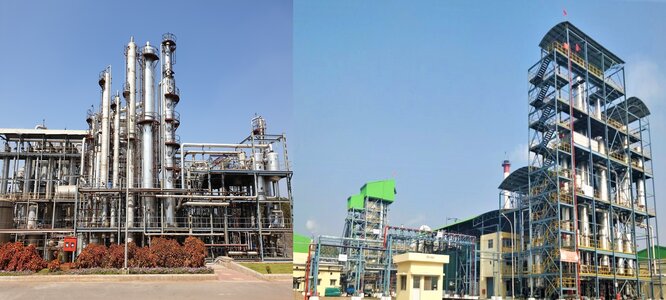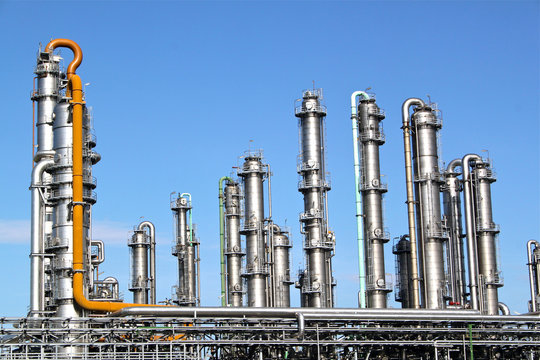Mechanical Seals for Distillation Plants
Mechanical Seals for Distillation Plants
Mechanical seals are devices used to prevent the leakage of fluids
Distillation is a process widely used in industrial plants for the separation and purification of gases. This technique relies on the differences in boiling points of various components in a gas mixture. Here's an overview of how a cryogenic distillation industrial plant works:

Process Overview:
-
Feed Gas Compression:
- The process typically begins with compressing the raw gas mixture to increase its pressure and facilitate downstream processing.
-
Cooling and Pre-treatment:
- The compressed gas is then cooled to low temperatures, often approaching or reaching cryogenic levels (below -150°C or -238°F), to allow for the condensation of certain components.
-
Heat Exchange:
- The cooled gas is passed through heat exchangers to further lower its temperature. Heat exchangers are essential for efficient energy utilization within the system.
-
Expansion Turbines:
- The cooled and partially liquefied gas is expanded through expansion turbines. This process causes a drop in pressure, leading to further cooling and the separation of components based on their different boiling points.
-
Fractionation Columns:
- The gas mixture enters a fractionation column, which is a tall vertical column filled with a series of trays or packing material. As the gas rises through the column, it undergoes multiple condensation and vaporization cycles. Components with higher boiling points tend to condense and collect on lower trays, while those with lower boiling points remain in the vapor phase and move upwards.
-
Product Collection:
- The separated components are collected at different heights in the column. The condensed liquids are withdrawn as product streams, while the remaining gas, enriched in the more volatile components, continues to rise through the column.
-
Reflux System:
- Some of the condensed liquid is returned to the column at various levels as reflux. This reflux enhances separation efficiency by providing additional contact between the vapor and liquid phases.
-
Product Purification:
- The collected liquid fractions are further purified, if necessary, through additional separation steps or treatment processes.
-
Heat Recovery:
- Energy efficiency is improved by utilizing heat exchangers to recover heat from various stages of the process and using it to preheat incoming feed streams.
Applications:
Cryogenic distillation is commonly used in the industrial separation of gases such as:
-
Air Separation: Production of oxygen, nitrogen, and argon from air.
-
Natural Gas Processing: Removal of impurities like carbon dioxide and hydrogen sulfide.
-
Hydrogen Production: Separation of hydrogen from other gases.
-
Petrochemical Industry: Separation and purification of various hydrocarbons and other gases.
-
Liquefied Natural Gas (LNG) Production: Separation and liquefaction of components in natural gas.
Distillation plants are complex and require careful design and operation to achieve efficient separation and maximize product purity. They are crucial in providing high-purity gases for various industrial applications.
Please feel free to contact us on: +91-8433777035 Email: info@sealomech.com

